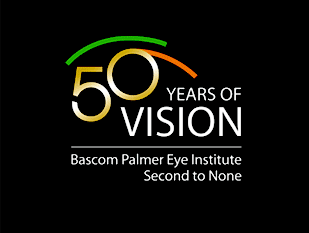Links
April 28, 2008 by JMP · Leave a Comment
*revised 02/26/2013
Bascom Palmer Eye Institute – USA
Bascom Palmer Eye Institute has earned an international reputation as one of the premier providers of eye care in the world and is consistently ranked among the top two eye hospitals in the United States. Bascom Palmer is the largest ophthalmic care, research and educational facility in the southeastern United States. More than 200,000 patients are treated each year with nearly every ophthalmic condition and 10,000 surgeries are performed annually. Bascom Palmer Eye Institute has served as the Department of Ophthalmology for the University of Miami School of Medicine since its founding in 1962. Over the past 10 years, Dr. Eduardo Alfonso has implanted a series of Dohlman KPros in Bascom Palmer patients and Drs Jean-Marie Parel, Eduardo Alfonso, Emmanuel Lacombe, Bernard Duchesne have designed a novel supra-Descemetic Synthetic Cornea (the Keralia) they experimentally tested together with Drs Josef Stoiber, Stephan Kaminski, Vivana Fernandez, Peggy Lamar and the team of the Ophthalmic Biophysics Center (OBC). In May 2003, the OBC team obtained EC approval for the Keralia and Phase I clinical trials that have begun January 2004 in Paris, Liege, Salzburg and Vienna. The first patient was successfully implanted on January 30, 2004 at the Liege University Hospital Center in Belgium. For additional information about Bascom Palmer Eye Institute visit the website at www.bascompalmer.org
Centro de Oftalmología Barraquer – Spain
The “Centro de Oftalmología Barraquer” is an independent, private entity, dedicated to the investigation, prevention, diagnosis, treatment and follow-up of eye diseases. It offers assistance to patients from all over the world, about 6.000 operations are performed annually in its operating rooms. Its teaching arm, the Instituto Barraquer, is a self-supporting scientific organization dedicated to the investigation, teaching and promotion of high quality ophthalmology, the exchange of scientific ideas, discoveries and innovations for improvement of surgical and medical therapy. Professor Joaquín Barraquer is a pioneer in the field of corneal surgery. He inserted his first keratoprosthesis in 1955 (Dorzee model) which was retained for 5 years. Other models were used over the years, but since 1963 Strampelli’s Osteo-Odonto-Keratoprosthesis is the technique of choice, a procedure which, after certain modifications, continues to be used at present by Professor Barraquer’s associate, Dr.Temprano, in selected cases at the “Centro de Oftalmología Barraquer”. The Proceedings with the extended abstracts of the past Kpro Study Group Meetings (1999, 2001, 2002, 2003) and a complete, up-dated bibliography on keratoprostheses and related subjects have been published in the “Anales del Instituto Barraquer “. For further information: http://www.barraquer.com
IOSS – International Ocular Surface Society – USA
IOSS is a non-profit organization for members to gain new experience and skills in treating ocular surface disorders. The society is devoted to promoting knowledge and skills of diagnosing and treating ocular surface and tear disorders. www.ioss.org
The Vision Cooperative Research Centre is a unique worldwide collaboration of over 30 organisations who have come together to deliver business growth and better eyecare for Australia and the world, by developing breakthrough technology and products for the correction of myopia and presbyopia; delivering innovative education programs at all levels of the eyecare industry; and developing models which provide effective, affordable, and sustainable eyecare delivery to communities in need. VCRC has four research program areas: Myopia and Presbyopia; which have been identified as key areas of opportunity in eyecare; and Vision Care Delivery and Business Growth, which will provide the essential support needed to ensure market development. Within the Myopia Program, one of the key projects is the development of a corneal onlay, based on the implantation of a synthetic lens made from a highly porous perfluoropolyether to bring about a change in the shape of the corneal surface, thereby achieving the desired refractive correction. The multidisciplinary VCRC approach includes optometry, ophthalmology, vision science, clinical science, epidemiology, microbiology, biochemistry, biostatistics, materials science, precision optical and biomedical engineering, polymer and surface chemistry, physiology, vision care delivery, business, and social and behavioural sciences. The Vision CRC is also committed to the delivery of quality education and training to postgraduate students, eyecare professionals and industry in Australia and internationally. Through the development and delivery of multidisciplinary educational courses and materials for both Academic and Professional education, the Vision CRC aims to produce high quality researchers for industry and science; well trained practitioners who are able to use high-technology products and to optimise and expand their business; and industry staff with the skills to improve customer service. www.visioncrc.org & www.brienholdenvision.org




